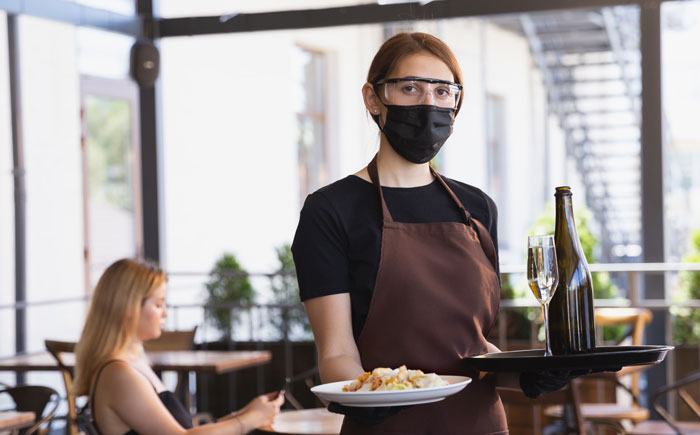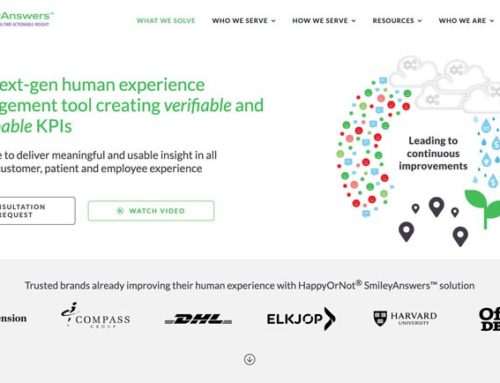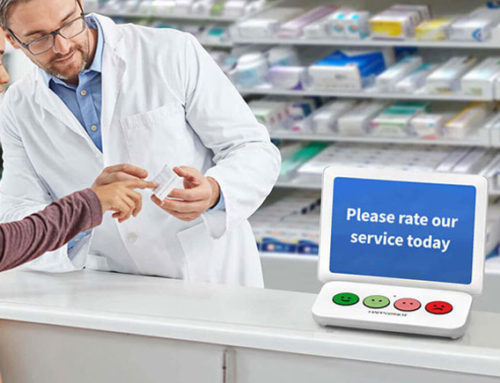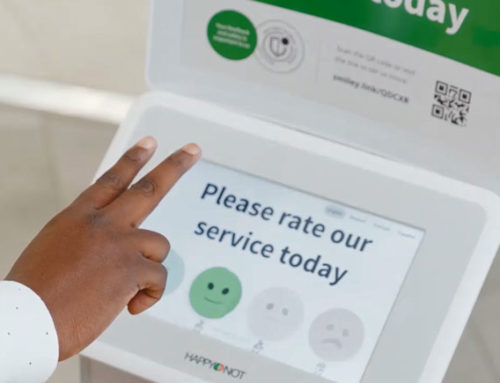As the world economy continues to be challenged with the Covid-19 virus, consumers are constantly changing behaviors to adapt to this pandemic. This includes how individuals are shopping for food at the grocery store and their desire for dining out. Recent research has revealed how consumers are changing their habits to consume food. Within this post, we will cover some trends both in the shopping of food and for restaurants. We will also cover some ideas on how to provide better experiences for customers.
The Grocery Store Experience
According to a recent research report from Acosta, grocery shopping habits have been changing:
- Grocery shopping frequency has declined since the start of the pandemic (Shopping once a week has declined 20% from 67% to 47% of shoppers)
- Shoppers are spending more and stocking up (Thirty-seven percent of shoppers reported spending more on grocery trips now vs. pre-Covid-19)
- Shoppers are eating more at home than they did pre-pandemic (66% of the shoppers)
The WHERE and HOW in grocery shopping has also changed
- As a result of the Covid-19 virus, 78% of shoppers from a recent survey (Food Industry Association survey – Pay or membership required) said they made a change in WHERE they shopped for food. Forty percent shopped at fewer stores and 28% shopped more online. There has been a tremendous move to digital channels for customers to acquire food. In 2019, online grocery accounted for 10.5% of U.S. consumers’ total weekly grocery spending. This number climbed to 14.5% in February and then jumped to 27.9% for March and April.
- Eighty-nine percent of shoppers changed HOW they shop for food. Along with spending more per visit, the trips are faster, the range of items bought is smaller, and more shopping is being done online.
To meet the needs of the shopping consumer, grocery stores are learning and adapting to this rapid change by listening to their shoppers. Here are some thoughts from the research on what concerns shoppers have along with a few ideas to make it a safer experience.
Top grocery shopping concerns from the consumer include:
- Getting Sick
- Items out of stock
- Prices Rising
- Sanitation of store, carts, and checkout
- Limit the amount of shoppers
- The availability of special hours
- Minimize the number of employees handling food
- Having fresh produce and meat
The Restaurant Experience
With the effects of the pandemic (Economic downturn, changes in consumer behavior in grocery store shopping, and limitations on restaurants from government mandates), the dining out experience has changed dramatically this year. Health and safety have risen to be a top priority in the restaurant experience. Because of current and expected economic conditions, dining for many will become less frequent. Consumers are spending more on the basics and will change behaviors quickly based on their current conditions.
The move to takeout, drive through, and delivery are clear as many restaurants are closed or limited in terms of available seating. Recent research from AlixPartners indicated that 26% of the consumers surveyed said they will be cutting back on dining out. Takeout and delivery orders were placed by 57% of the respondents with pizza and fast food being top choices – Takeout was preferred over delivery. A fear of catching the Covid-19 virus was cited by 60% of those polled as to why they were not going into restaurants for indoor dining.
Below are some major touchpoints to consider when keeping customers safe. Perception of safety is also important and is included.
- Touching door handles in restaurants (78% surveyed believed it could increase their chances of contracting Covid-19)
- Self-serve food areas (Salads, buffets – 77%)
- Public Restrooms (74%)
- Crowded Restaurant (69%)
- Self-Serve Soft drinks/Coffee (68%)
- Sharing condiments (64%)
- Sharing food at restaurants (63%)
- Eating food with your hands (56%)
- Using dishware/silverware at restaurants (48%)
- Outdoor seating
- Disposable Menus
- Mask Mandates
- Visibly wiping down tables
- Employees visibly wearing safety apparel
- Disinfecting wipes and hand sanitizers
- Food shield covers and sneeze guards
- No open containers
- More space between tables – visible social distancing
- Touchless options
SmileyAnswers Big Picture Review
The big picture that we are seeing in the purchasing of food either for grocery store shopping and dining out involves these three important points:
- Customers want to be safe
- Economics are impacting most consumers in their food consumption choices
- Consumer behavior is quickly changing based on current conditions
Because of the need for safety and to protect individual and family health, this will be a top priority for both grocery stores and restaurants. More planning and actions will be needed to keep customers safe and healthy while also bringing a positive experience. The senses will be heightened for all food interactions for each individual (both at the conscious and subconscious level). Businesses can improve experiences by going through their customers touchpoints and reflecting on how the five senses are perceiving safety at each of them. As an example, examine the perception of cleanliness with the five senses at all the different grocery and restaurant touchpoints.
Economics are impacting most consumers in their food consumption choices
How a person perceives value is more important now than pre Covid-19. Because of their safety, some consumers prefer convenience over price due to the friction in acquiring food. For others, prices are of higher importance based on budget constraints. Constantly measuring how customers feel about what they value takes on a new level of importance for businesses to understand their customer. Each customer has their own perception and this perception changes quickly due to personal circumstances. This raises the importance of collecting a large sample to better understand the true value a business is providing each of their customers.
Consumer behavior is quickly changing based on current conditions
Conditions are changing very quickly for consumers that keeping up is very difficult for organizations to understand these changing expectations and perceptions. Changes in employment and health impact these expectations along with local and national information on the pandemic. Measurement is vital for businesses to learn and understand these changes. By being proactive, businesses can be on top of all these changing trends. Having a way to let consumers provide feedback on how they feel will allow decisions to be more accurate based on changing needs. A real-time feedback solution can also catch hidden pain points as well as learning new trends quicker.
Wrapping it up
The Covid-19 crisis has impacted how consumers shop for and dine out for food. The trends and individual ways consumers are adapting is a moving target. Grocery stores and restaurants have to be on top of changing expectations and perceptions of the customer to protect their safety and still provide a positive experience. Customers have changed where and how they shop as many have moved to digital spaces to acquire food. Being able to lower the chances of acquiring Covid-19 impacts how customers shop for food at the grocery stores and determines whether they get takeout, delivery, or go to a restaurant to dine in. Current economic conditions as well as perceived future conditions impact the consumer on their choices. Since these trends and customer perceptions are changing so fast, businesses need to be on top of these moving changes to provide safer and more positive experiences. Having real-time feedback is a way for businesses to be proactive in providing positive and safe experiences versus chasing service recovery.
SmileyAnswers
SmileyAnswers is the leading reseller of the HappyOrNot® Reporting System within the United States, Canada, and the U.K. HappyOrNot® has over 1.5 billion feedbacks to date and is a leader in capturing the real-time insight of customers, patients, and employees. With the recent addition of the Smiley Link and Smiley Digital, SmileyAnswers is in the unique position to capture a whole journey Live by using the Smiley’s for both digital and physical touchpoints. Organizations can “listen” to how people feel at all the important touchpoints. After capturing real-time feedback at these touchpoints, organizations can then “learn” what and where the hidden pain points are to make immediate positive changes. Lastly, successes can be shared with Live Sharing, Social Sharing, digital boards, social media, email, power points, and more. This process can be repeated daily throughout the year to constantly improve human experiences.




